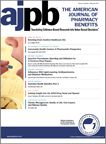Publication
Article
AJPB® Translating Evidence-Based Research Into Value-Based Decisions®
Breaking Down Another Healthcare Silo
Author(s):
Medication reconciliation between the inpatient and outpatient settings might be possible through the pharmacy benefit management platform.
Merriam-Webster’s dictionary defines a system as “a group of interacting, interrelated, or interdependent elements forming a complex whole.” I would argue that healthcare is not a system but a set of independent actions and activities that often have little or no continuity. One reason for this lack of continuity is the silos that exist within the healthcare environment.
Healthcare reform has introduced several ways to reduce the number of silos. One way is medication reconciliation between the inpatient and outpatient settings. How do we ensure that all parties know what medications patients are taking when they go from one setting to another, so that there is a reduced probability of redundancy, conflict, or omission? A number of studies have shown that lack of appropriate medication reconciliation causes a significant number of avoidable medical problems that cause an increased number of medical issues and readmissions to the hospital, and even death.
Where does the solution lie? Is it with the provider, the patient, or the payer? Or a combination of all three? I believe that if no one party is ultimately responsible, the problem is rarely completely solved. You need someone who stays up at night working to create a solution, with their future financial or business success based on solving the problem.
Many organizations have begun addressing this issue. To the best of my knowledge none have found an effective, scalable solution within a reasonable cost structure. Partners Healthcare in Boston created a medication reconciliation module in the electronic medical record. In theory, a well-designed product such as this module (and it is well designed) used in an integrated health system should be able to solve the problem. However, it still has not totally done so, although it gave better results than we have seen under other circumstances. For the solution to be effective, providers have to actively utilize it.
Others have suggested that the responsibility to transfer this information should belong to the healthcare consumers because they are the only ones who know about not only all their prescription medications but also their over-the-counter medications, herbs, and minerals. In theory, this makes sense. Unfortunately, there are many barriers to this solution. Many medications have long and confusing names, patients often do not understand what the medications are for, and patients are often in a condition where they are not able to appropriately communicate this information. Some individuals state that the healthcare providers should be responsible for ensuring the passage of information and oversight of the complexities of medication reconciliation. Unfortunately, it is unusual that a single physician has access to all the medications that a patient is taking, both those prescribed by a healthcare provider and those that a patient has purchased without the need of a prescription.
My suggestion is that we utilize a system that is already in place and expand it to include all medication information. Is it possible to take the pharmacy benefit management platform and use that as the basis for a system that addresses medication reconciliation?
Your thoughts?







